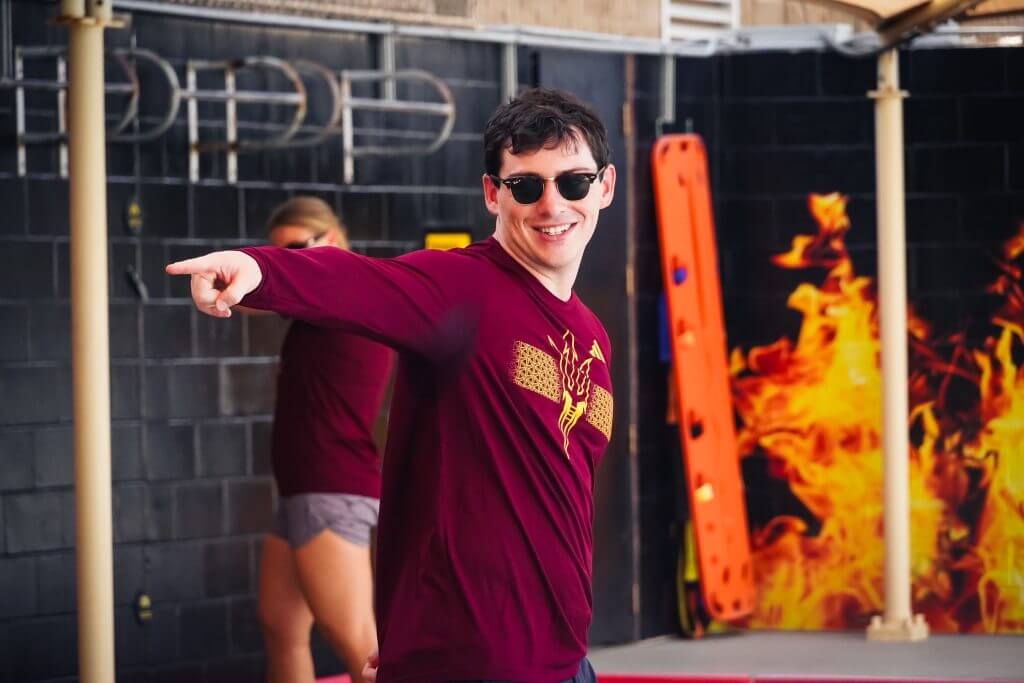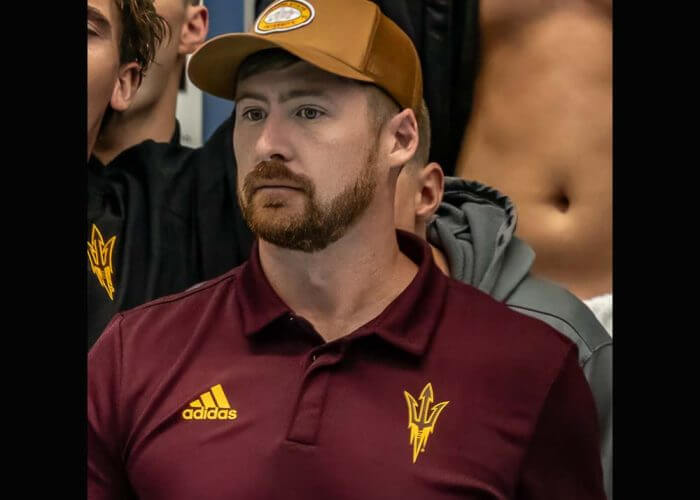Swimming in Statistics: How Arizona State Is Changing College Swimming

Swimming in Statistics: How Arizona State Is Changing College Swimming
Four years ago, the University of Virginia changed college swimming. The team was the first to notably partner with their mathematics department, specifically Dr. Ken Ono, in order to break down a swimmer’s mechanics using mathematical modeling. Coaches used statistics and tracking technology to point to “technical flaws” in a swimmer’s stroke, as Olympian Kate Douglass noted in her research paper, “Swimming in Data.” The approach allowed the athletes to be more efficient than ever before. This efficiency led to pure dominance for Virginia – four straight NCAA women’s titles and multiple Olympians.
But could the success be replicated? And how? Arizona State seeks to answer that question, after hiring USA Swimming statistician and coach Corey Manley this July. I spoke to Manley about Arizona State’s process, one which could continue to revolutionize college swimming.
Why Statistics In Swimming?
For a national champion, improvement is a difficult task. But as a new era began at Arizona State, questions arose as to how the team could continue their success, which included an NCAA title to cap the 2023-24 season. The answer seems to lie in the math. Manley, a former swimmer at Holy Cross and coach at Delaware club powerhouse Diamond State Aquatics, came in with a unique skill set, one which he believes “translates perfectly” into the world of college swimming.
“Swimming, unlike most team sports, has very little extraneous variables, making it a natural fit for data to be aggregated,” Manley said. Essentially, without having to worry about what play was called, or what route was run, it’s easier to analyze swimming statistically. Everything comes down to time, making the sport “a great starting point” for sports analytics, according to Manley.
Using Data at Practice

Photo Courtesy: Peter H. Bick
For ASU, which is under the watch of head coach Herbie Behm, this “data aggregation” has become a key part of the daily routine. Behm has been at the forefront of innovation in the sport, always looking for a new wrinkle, approach and data to push his swimmers further. The coaching staff meets daily to discuss statistics and data points from the week, beginning with how they will structure practices. Manley pointed to a desire to “reverse-engineer” a race as the inspiration for their training, looking to “tinker with sets, but keep the same intention.” He pointed to certain days like a “speed day,” giving the coaches data points to collect, and to compare week by week. These points can then be used to analyze the effectiveness of the training throughout the week. “The goal is to keep consistency,” emphasized the coach, but also analyze how to improve practice structure, making the swimming more efficient.
The coaches structure practice to “meet the individualities of the athlete,” according to Manley. This setup establishes a personalized experience. The staff evaluates each athlete’s performance not just through times, but “wellness check-ins,” in which swimmers evaluate their preparedness for any given training day. The check-ins help the coaches measure whether a poor performance was simply a bad day, or if a structural problem exists in how they are being trained.
Using Data Outside The Pool
The data also allows coaches to give swimmers specific points to work on throughout practice. For example, through analysis that a swimmer is struggling in the opening third of 50s fast during training, the staff could advise the swimmer to put a heavier focus upon their start and breakout throughout the week. The amount of data collected allows training improvement in a variety of ways.
While obviously essential, training in the pool represents just one part of the process to winning a national championship. It’s why the ASU staff and Manley put the same focus and attention on what their athletes do in the weight room.
“We train 20 hours a week (in the pool)… which is not a holistic way of doing,” said Manley. The weight room gives the team “additional data points to pull from.” The team meets with strength coaches daily, similarly checking if sets throughout the week are effective by analyzing swimmer results. They also complete daily “wellness check-ins,” just like in the pool.
The team’s recovery outside of the pool represents another key piece of their performance. The staff looks to “react in real time” to perceived overtraining, according to Manley, adjusting based upon these metrics. This approach allows them to prevent injuries and emphasizes health. By collecting data from two measures “not heavily tracked,” the Sun Devils give themselves an advantage.
Using Data at Meets
With training just beginning for this collegiate season, considerable preparation remains for the defending champs. But as they approach competition, the analytics collected will become even more crucial.
“The data allows us to make changes in a meet lineup beyond just one’s best time,” Manley said. The team looks to use “not just a data point from a dual meet in March” but data “from the last three Wednesdays of work, per se.” The collection of additional data points allows the coaches to make “a more informed decision” beyond just one race. A swimmer could be struggling with sickness early in the season, only to perform well at practice later. This data would create more opportunity for that swimmer to contribute, bettering the team. In a sport defined by hundredths of a second, the approach is critical. In order to dominate dual meets once again, the Sun Devils are thinking above and beyond.
Through the hiring of Manley, Arizona State continues to innovate in their quest for another championship. Manley believes “it’s now time to put up or shut up. The burden is on us to prove this is something worth exploring.”
Optimism remains high in Tempe, as ASU continues through early training.
“We believe if we can aggregate, it can tell us a really compelling story,” Manley said.
For Arizona State, the hope is that the story ends with another title, while transforming college swimming in the process.
.jpg)
- 2019 WOMEN'S FULL RESULTS
- 2019 MEN'S FULL RESULTS
- 2020 WOMEN'S FULL RESULTS
- 2020 MEN'S FULL RESULTS
- 2021 WOMEN'S FULL RESULTS
- 2021 MEN'S RESULTS - DAY 1
- 2021 MEN'S RESULTS - DAY 2
- 2021 MEN'S RESULTS - DAY 3
- 2021 MEN'S RESULTS - DAY 4
- 2022 WOMEN'S FULL RESULTS
- 2022 MEN'S FULL RESULTS
- 2023 WOMEN'S FULL RESULTS
- 2023 MEN'S FULL RESULTS
- 2024 WOMEN'S FULL RESULTS




Good luck to ASU replacing 2024 four-time Olympic champion (and two time NCAA champion) Léon Marchand.
Other than times/splits, what data are you talking about? What are they measuring? This article gives almost no information about that. Leaves me with more questions than answers.
You can take all the data in the world, but you need to be able to listen when they talk to you!